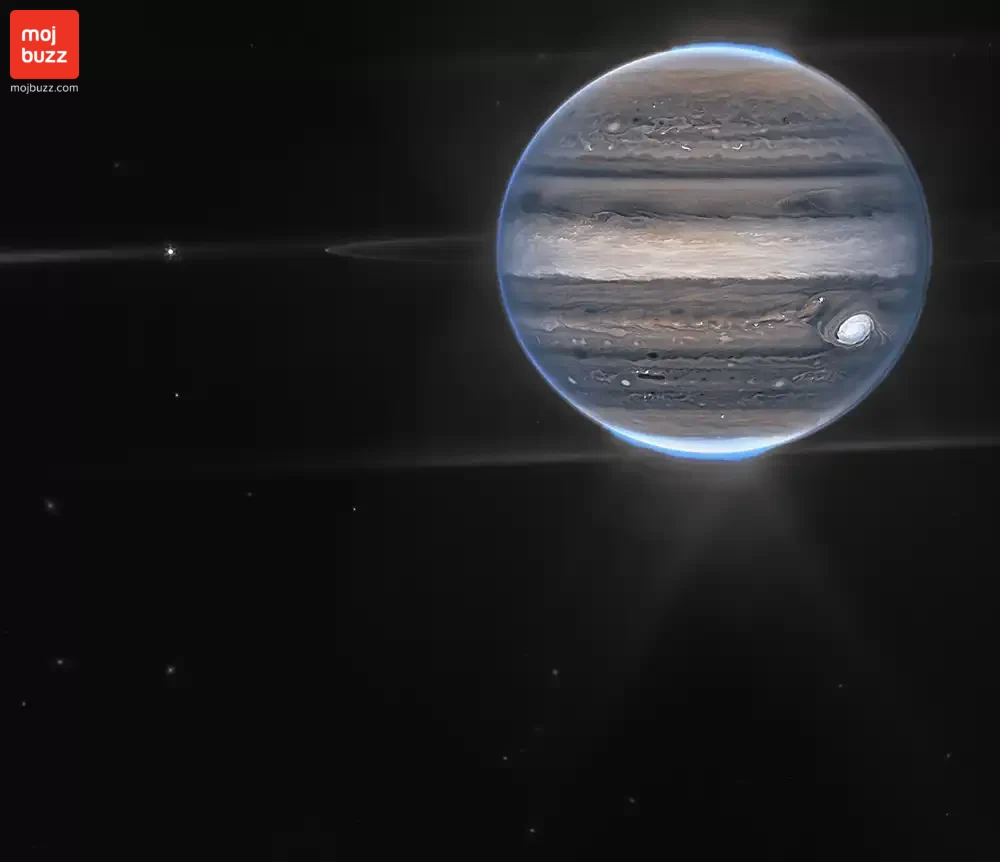Internet Baffled with New Images of Jupiter from James Webb Space Telescope: NASA Releases Stunning New Images

NASA’s James Webb Space Telescope captured a new view of Jupiter in infrared light, uncovering clues to the planet’s inner life in a new image. In addition to the planet’s iconic Great Red Spot, two of its moons, rings, and even distant galaxies are visible.
Since infrared light is invisible to humans, the light has been mapped onto the visible spectrum. Generally, the longest wavelengths appear redder and the shortest wavelengths are shown as more blue.
Citizen scientist Judy Schmidt processed these images and turned the raw data collected from Webb’s sensors into the visual you see here.

Image Description 1: Jupiter dominates the black background of space. The image is a composite and shows Jupiter in enhanced color. The planet’s Great Red Spot appears white here. The planet is striated with swirling horizontal stripes of neon turquoise, periwinkle, light pink, and cream. The stripes interact and mix at their edges like cream in coffee. Along both of the poles, the planet glows in turquoise. Bright orange auroras glow just above the planet’s surface at both poles.
Image Description 2: A wide field view showcases Jupiter in the upper right quadrant. The planet’s swirling horizontal stripes are rendered in blues, browns, and cream. Electric blue auroras glow above Jupiter’s north and south poles. A white glow emanates out from the auroras. Along the planet’s equator, rings glow in a faint white. These rings are one million times fainter than the planet itself! At the far left edge of the rings, a moon appears as a tiny white dot. This moon is only about 12 miles (20 km) across. Slightly further to the left, another moon, about 100 miles (150 km) across, glows with tiny white diffraction spikes. The rest of the image is the blackness of space, with faintly glowing white galaxies in the distance.
Click here to go to the Homepage
Keep Tuned with mojbuzz.com for more Entertainment




